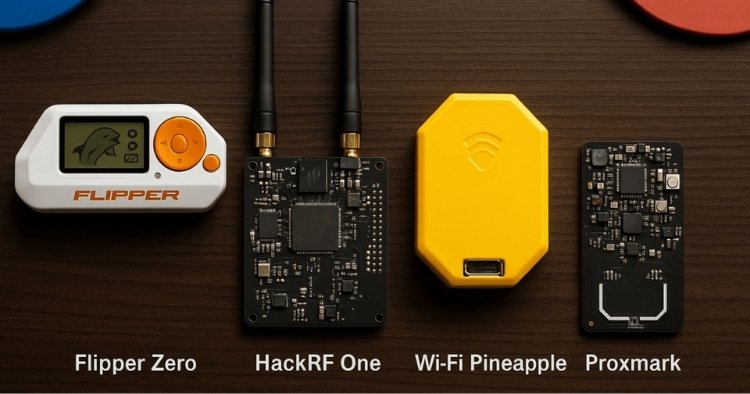Pocket-Sized Hacking Gadgets Pose Real Threats
June 26, 2025

At STACK Cybersecurity, we often hear the same question from busy business owners and managers: “Are these new hacking toys really something I should worry about?” The answer is yes, but not for the reason you might think. The tools themselves are not new; what is new is how cheap and easy to use they have become. Below is a plain-language look at the trend and what you can do right now.
A Short History in Everyday Terms
| Time Period | Who Could Hack Wireless Systems | What It Looked Like |
|---|---|---|
| 1990s to early 2000s | 2000 to 2015 | 2015 to today |
| Highly trained researchers with expensive lab gear | Security consultants and university teams | Almost anyone with a credit card and internet access |
| Big antennas, custom software, weeks of testing | Laptops, open-source programs, detailed tutorials | Palm-sized gadgets, step-by-step YouTube videos |
The Flipper Zero
One product shows the change better than any chart. The Flipper Zero is a hand-held, game-like device that costs less than many office chairs. Out of the box, it can copy door badges, open garage remotes, and read short-range radio signals. With a snap-on add-on board, it can also work with Wi-Fi networks. The learning curve is closer to a smartphone app than to a college course.
Why This Matters to Your Company
- Patch and Update: Keeping software updated and applying patches promptly is one of the most effective ways to prevent exploitation. This not only addresses known vulnerabilities but also boosts system performance.
- Lower barrier for criminals: Skills that once took months to learn can now be copied from a five-minute YouTube video.
- Older equipment is vulnerable: Door readers, alarms, and Wi-Fi routers installed before 2015 often rely on weak or outdated security settings.
- Reputation risk: A single badge-cloning event or customer data leak can damage trust you have spent years building.
Good News: Defense Has Evolved, Too
- Cloud-managed cameras and modern door controllers cost a fraction of earlier models.
- Managed security services let small firms outsource 24/7 monitoring that used to require full-time staff.
- User-friendly dashboards give non-technical managers instant views of alerts and system health.
Three Practical Steps You Can Take This Quarter
- Inventory your “old but still working” gear. Check door readers, point-of-sale terminals, Wi-Fi access points, and alarm panels installed before 2015. Note any item that has never had a software update.
- Layer your protection. Combine physical locks, strong Wi-Fi encryption, and basic employee awareness training. One weak spot can undo all the strong ones.
- Partner with specialists. A security assessment from STACK Cybersecurity can identify quick wins, such as replacing a vulnerable badge reader or adding multi-factor login to your cloud apps.
The Bottom Line
Cyber attackers prefer easy targets. By retiring outdated hardware, enabling modern encryption, and scheduling regular reviews, your business becomes much harder to hit. The required steps are manageable and the payoff is peace of mind plus a reputation for taking customer data seriously.
Reporting
U.S. companies: All companies should report incidents and anomalous activity to the Cybersecurity and Infrastructure Security Agency (CISA) 24/7 Operations Center at report@cisa.gov or (888) 282-0870 and/or to the FBI via your local FBI field office or the FBI’s CyWatch at (855) 292-3937 or CyWatch@fbi.gov.
For National Security Agency (NSA) client requirements or general cybersecurity inquiries, contact Cybersecurity_Requests@nsa.gov.
Call STACK Cybersecurity at (734) 744-5300 or Contact Us to learn more about how you can fortify your organization's cyber defenses.
